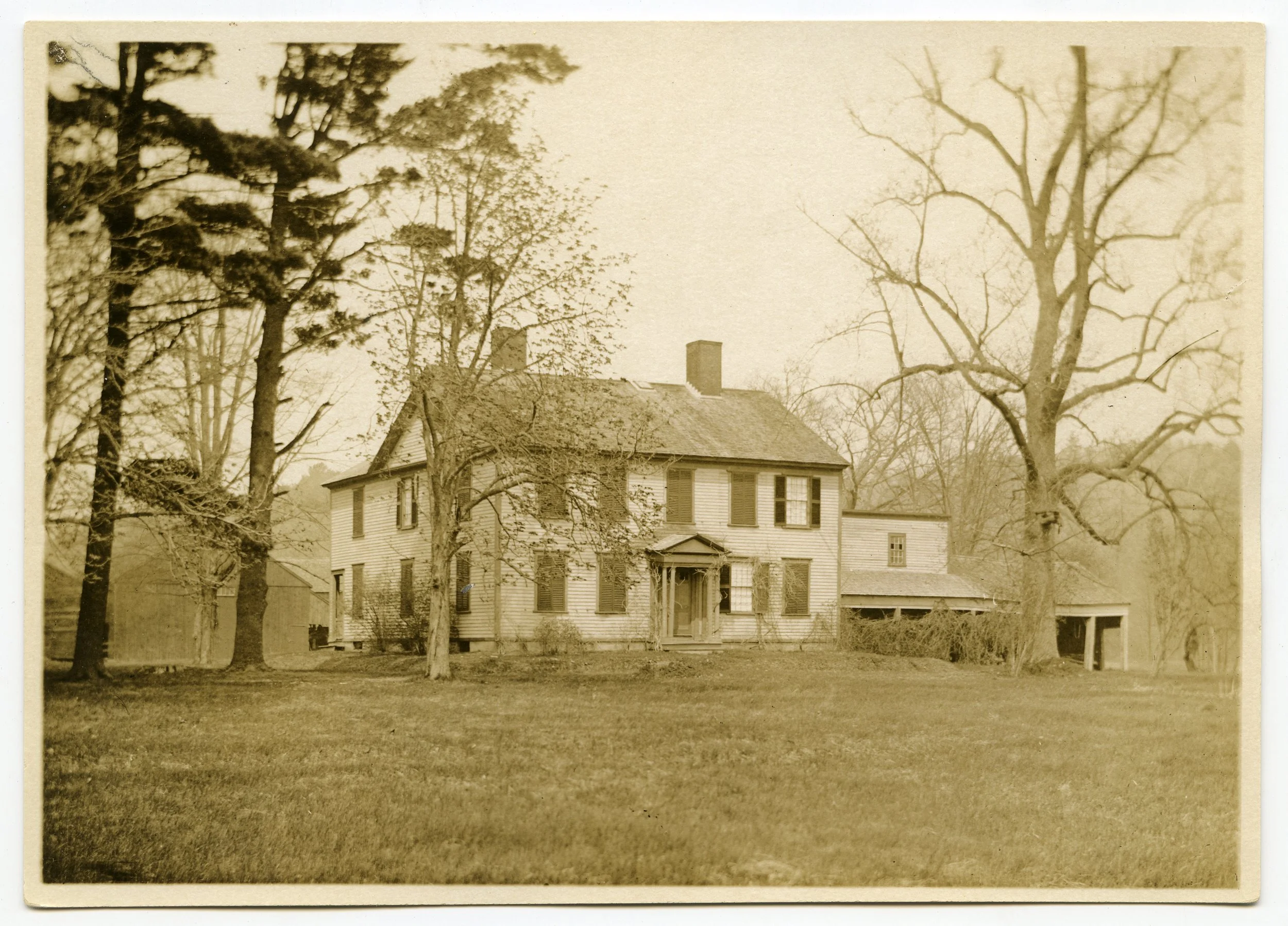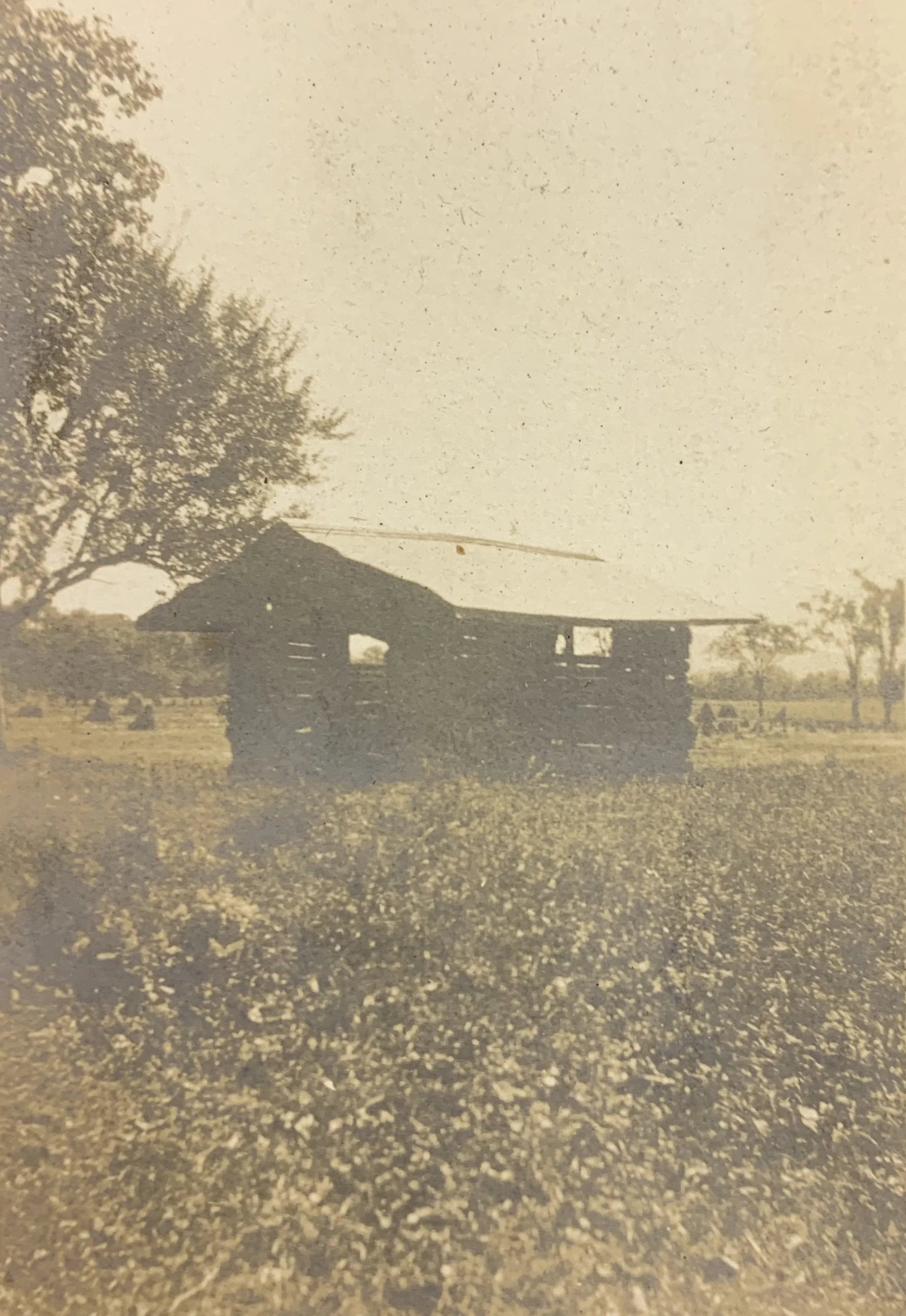Phelps Farm: Affluence and Influence at Pine Grove, 1815-1893 | Phelps Farm and the Dairy Industry, 1893-1978
Phelps Farm: Affluence and INfluence at Pine Grove, 1815-1893
In 1815, the farmstead at Forty Acres was joined by a substantial new farmstead across River Drive: Phelps Farm. The household at Phelps Farm, established by Charles Porter Phelps, the son of Elizabeth Porter Phelps and Charles Phelps, Jr., was both an extension of, and departure from, the household and land stewardship practices at Forty Acres. While Phelps Farm postdates the era of enslavement in Massachusetts by more than 30 years, it was nonetheless deeply embedded in the Atlantic slave economy, as Phelps invested for decades in the transatlantic shipment of plantation-based commodities from Cuban sugar to South Carolina cotton as a merchant in Boston from 1799 to 1816, generating revenue that propped up Phelps Farm. Likewise, where Phelps’ parents maintained Forty Acres as an extensive dairy farm, Phelps initially conceived of Phelps Farm as a merino sheep operation before turning to land cultivation strategies that produced crops for market sale and family use. By the mid-nineteenth century, these land stewardship practices made Phelps Farm one of Hadley’s largest, wealthiest, and most productive farms. Like Forty Acres across River Drive, intensive agricultural stewardship declined in the latter half of the nineteenth century as Phelps Farm transitioned into “Pine Grove,” a summer home that nevertheless remained an active farm.
Phelps began taking an interest in farming on the land now called Phelps Farm long before he was in residence there. In the decade between 1805 and 1815, the vast majority of farm labor at the site was supplied by men (both Black and white) on long-term contracts in which the rate of pay varied seasonally. Phelps’s reliance on such contracts dipped considerably from the 1830s to the 1850s, presumably as his sons became old enough to work around the farm. One study found that in 1844, just 26 percent of the labor needed to acquire wood, cart and spread manure, care for livestock, and farm corn and hay for Phelps Farm came from “off farm” sources. Among those “off farm” workers was Black laborer William Till, who continued to work for the Phelps family around the farm, and often in the vegetable gardens that lay east of the large farmhouse Phelps built there in 1816.
Phelps Farm, circa 1900. Charles Porter Phelps built this farmhouse in 1816 and expanded it twice in the 1820s. The agricultural buildings to the left functioned as a cow barn and other livestock holding areas. Source: Johnson, Clifton, 1865-1940, “The ancestral home of the Phelps family,” Digital Amherst, accessed July 17, 2023, https://www.digitalamherst.org/items/show/2063.
Phelps Farm was active and productive. Phelps expanded his farmhouse at least two separate times in the 1820s and added new agricultural buildings to the landscape over the first half of the nineteenth century. At Phelps Farm, he was an early and enthusiastic participant in the region’s Merino sheep craze, an agricultural fad that swept through Vermont, the Connecticut River Valley, and the Hudson Valley. A Spanish breed with a dense coat of fine, soft wool, Merino sheep produces more higher-quality wool per head. The breed’s popularity soared in response to the Embargo Act of 1807, which effectively prohibited overseas trade, thus increasing domestic demand for fine woolen products. The craze peaked during the War of 1812 (1812– 1815), when Merino wool could sell for $2.50 per pound, while common wool sold for about 50 cents per pound. In 1815, with the end of wartime trade restrictions, British woolen imports quickly dominated the domestic market. American manufacturers relied on cheaper common wool in order to compete; by 1817, the price of washed Merino wool had plummeted to 35–40 cents per pound. Any remaining demand for fine wool was deflated by the economic Panic of 1819. Understandably, Charles Porter Phelps eventually deemed the farm’s Merino venture a failure. Phelps’s records of expenses associated with the building of the farmhouse included “10 merino sheep, nearly a total loss”; elsewhere in the same document he describes $1,000 being “thrown away on Merino sheep bought for the farm.”
Agricultural buildings such as this corn crib dotted the landscape at Phelps Farm by the mid-nineteenth century and testify to the scale of farming at Phelps Farm during this period. Source: Unprocessed collections of (Moses) Charles Porter Phelps, Special Collections and University Archives, University of Massachusetts Amherst.
Following his venture into Merino sheep, Phelps turned to managing the landscape of Phelps Farm in ways that maximized its agricultural production. In the 1820s, Phelps calculated the annual value of farm produce for family use—rye, corn, potatoes, cider, pork, butter, poultry, wood, and garden vegetables—to exceed $260.195 But there were also crops raised for the market. By the 1840s, Phelps’s “fifty-eight improved acres in Hadley gave him one of the larger farms” in the area. In 1844, the farm’s “major products exported to market” were beef, pork, and corn, while dairy production was intended for family use only; flipping the equation, most of the food consumed by the family came from the farm, “with food imports accounting for only 6% of all food consumed.” In this year, sixteen to 20 acres were under cultivation, with another 20 to 25 dedicated to mowing grass, and the balance orchard and pasture; livestock were pastured in hilltowns west of Hadley. The 1850 agricultural census lists the cash value of Phelps Farm at $12,750—the highest value in town. The census enumeration shows no sheep at all; by that date they had apparently abandoned that enterprise, and were principally engaged in raising rye, Indian corn, and oats. Other livestock—two horses, four milk cows, two working oxen, a dozen cattle, and four swine—was valued at $425. By the 1830s and 1840s, the farm’s built environment included a barn and sheep house, a cornhouse, icehouse, woodhouse, calf stable, and hog pen.
After Charles Porter Phelps died in 1857, his eldest son Charles (known as Charles IV) assumed management of the property—first jointly with his brother, Arthur, and then individually. During the tenure of Charles IV, Phelps Farm lost considerable ground in terms of its comparative value among Hadley farms, marking a retreat from the relative affluence of the farm in the first half of the nineteenth century. The agricultural census of 1870 ascribed the farm a value of just $1,000, well below the median of about $5,000. Despite Charles Porter Phelps’s many children, only one grandchild (Ellen Bulfinch) lived to adulthood, and she died without children. At that time, Phelps Farm was absorbed into the Huntington line when Frederick Dan Huntington purchased it in 1893 and gave it to his daughter Ruth Huntington Sessions for use as a summer house, connecting Phelps Farm to the same trajectory in land stewardship practices observed at Forty Acres. Ruth’s vision for Phelps Farm would remake the farm as a thriving dairy operation for much of the twentieth century.
The northern elevation of the farmhouse at Phelps Farm during its tenure as a summer residence for Ellen Bullfinch. Source: “Pine Grove, North door: Uncles Frank + Arthur with Hattie, also Augusta, at back door,” unprocessed papers of (Moses) Charles Porter Phelps, Special Collections and University Archives, University of Massachusetts Amherst.


